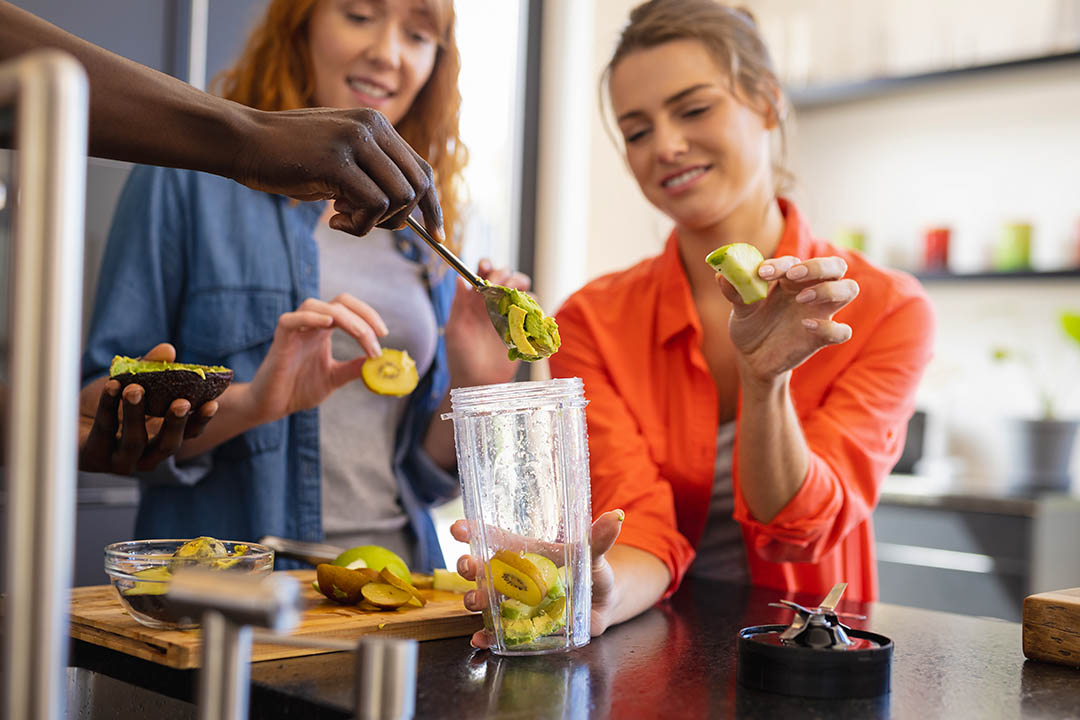
24 Apr Cut Risk of Kidney Stones with Magnesium
Cut Risk of Kidney Stones with Magnesium
by Ashleigh Feltham, Accredited Practising Dietitian and Accredited Nutritionist.
Around 10% of people will suffer from kidney stones in their lifetime. An increase in sedentary lifestyle, poor diet choices and obesity puts you at greater risk of developing kidney stones and dealing with the pain and inconvenience that will ensue.
The good news is that there are lifestyle habits that can decrease your risk of developing a kidney stone. One of these habits is your diet.
Kidney stones are a gathering of mineral and salt deposits forming different shapes and sizes in your kidneys. These are usually very painful to pass, often causing nausea and blood in the urine.

Two of the four types of kidney stones are linked to diet. Calcium oxalate causes 80% of kidney stones. A diet high in oxalate and low in calcium or fluids causes the formation of calcium oxalate. Stones are the result of acidic urine, often from dehydration or a diet too high in protein.
If you have had a kidney stone, you are at greater risk of developing further kidney stones. The type of stone you have determines the type of diet you should follow.
A study hot off the press has found that people who include more magnesium in their diet have a 30% lower chance of developing a kidney stone compared to those with lower amounts of magnesium in their diet. It is important to note that this finding was in dietary magnesium rather than from a supplement.
Magnesium is an essential major mineral your body needs. It is involved in over 325 different body functions.
Researchers investigated the quantities of magnesium in each participant’s diet. They looked at those with the highest intake of magnesium, 379mg, compared to those with the lowest intake of magnesium, being less than 250mg. Those with the higher dietary magnesium intake had a 30% lower chance of developing a kidney stone.
The current daily intake recommendation for good health for men over the age of 31 is 350mg a day and 265mg daily for women. So, the amount needed for good health, especially for men, is not that far off the 379mg recorded in this study, meaning greater kidney stone protection for men following the daily intake recommendation.
Here are some foods to include in your day to boost your dietary intake of magnesium for a healthy body. These amounts of magnesium are per 100g.
- Chicken breast, 30mg
- Beef, 11mg
- Tomato, 10mg
- Pumpkin, 17mg
- Anchovies, 101mg
- Oysters, 98mg
- Mussels, 75mg
- Firm tofu, 78mg
- Pumpkin seeds, 592mg
- Sunflower seeds, 370mg
- Peanut butter, 180mg
- Uncooked rolled oats, 104mg
- Raw spinach, 107mg
- Raw almonds, 266mg
- Cheese, 70mg
- Avocado, 73mg
- Wholewheat bread, 99mg
- Quinoa, 64mg
- Brown rice, 143mg
- Whole wheat pasta, 42mg
- Yoghurt, 25mg
- Soy milk, 25mg

Take home message:
Consuming your magnesium needs through food will provide your body with healthy compounds to cut your risk of developing kidney stones. Whole food provides a matrix of health benefits, and this study is a reminder that supplements are still not superior to whole foods.
References:
- Shringi S, Raker CA, Tang J. Dietary Magnesium Intake and Kidney Stone: The National Health and Nutrition Examination Survey 2011-2018. R I Med J (2013). 2023 Dec 1;106(11):20-25. PMID: 38015780.
- Nutrient Reference Values Australia and New Zealand. Eatforhealth.gov.au.
- Australian Food Composition Database. Food Standards Australia and New Zealand.
